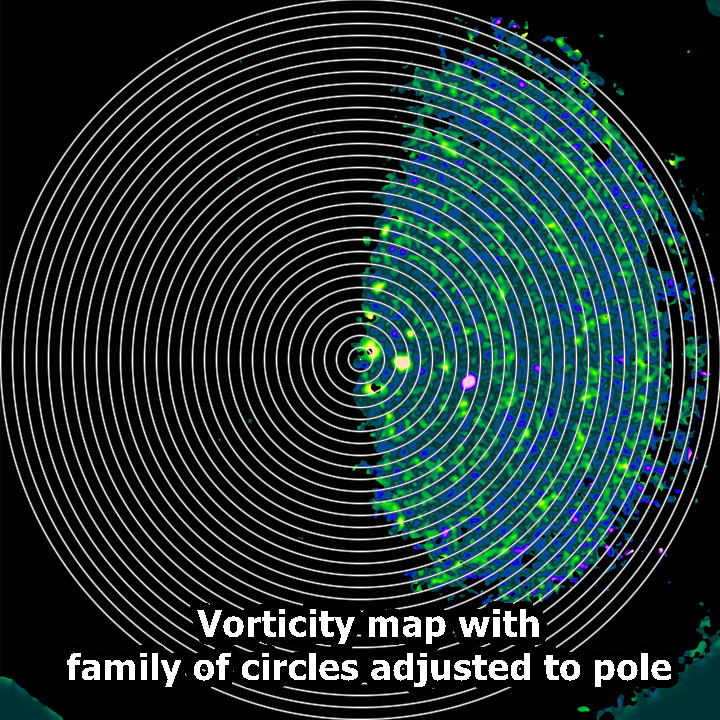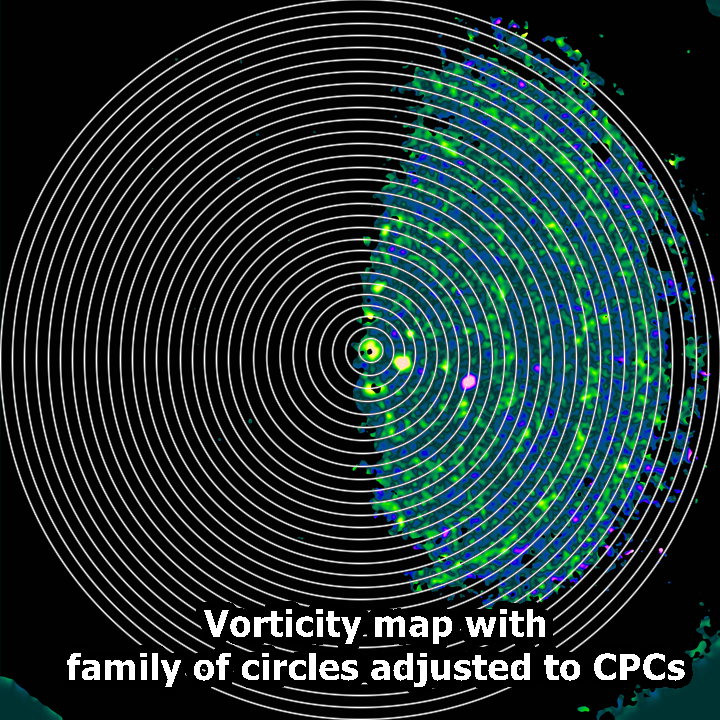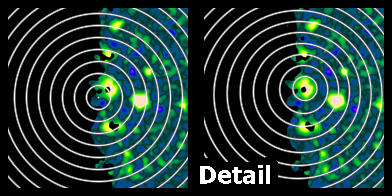A Generalized Framework to Investigate Families of Vorticity Distributions in JunoCam Image Data and Beyond
- 1Stuttgart, Germany (gerald.eichstaedt@t-online.de)
- 2Planetary Science Institute, Tucson, Arizona, USA
- 3Jet Propulsion Laboratory, California Institute of Technology, Pasadena, California, USA
Abstract
Traditionally, Jupiter's zonal wind profile is described as a function of latitude. Statistical data are integrated along circles of latitude. It is straightforward to apply the same principle to zonal vorticity profiles based on vorticity maps. This approach assumes implicitly a rotational symmetry of Jupiter's zonal structure with respect to Jupiter's rotation axis. However, the centers of both clusters of circumpolar cyclones turned out to be displaced from the respective pole. An appropriate description of zonal profiles requires a more flexible framework. This presentation is dedicated to a flexible geometrical way that a vorticity profile can be defined, as well as to the level of detail to which statistical data are described in the profile. The general approach is applicable well beyond zonal vorticity profiles, but our focus is on vorticity data retrieved from JunoCam [1] images.
Geometry
The circles of latitudes form a family of concentrical circles parameterized by the latitude as the only parameter. Let's call this parameter the “index” that is mapped to its circle of latitude. We obtain additional flexibility by a continuous distortion of the family of concentrical circles and by restricting the resulting family of curves to valid areas of interest without distorting our vorticity map. This generalized family of curves is sufficiently flexible to investigate profiles of 2-dimensional structures beyond zonal vorticity profiles. For even more flexibility in our evaluation, we can merge several such families of curves of the same index set into a single family of curves by concatenating corresponding curves.
A curve of the family is embedded into a vorticity map. So, each arc length position of the curve is mapped to a vorticity value.
Statistics
Rather than plotting a diagram of vorticity as a function of arc length, we are more interested in the statistical vorticity distribution covered by the respective curve of our family of curves. This construction induces a mapping that assigns each index a vorticity distribution function.
These vorticity distribution functions can be discussed as they are, or they are reduced to usual statistical parameters such as the mean, standard deviation, or higher-order statistical moments. Profiles as a function of our index can be plotted as diagrams when based on such statistical parameters.
Modified Zonal Vorticity Profile
With these general considerations, we return to our initial motivation: A modification of a zonal vorticity profile (ZVP) based on a modified pole close to the center of the south polar cyclone with modified circles of latitude continuously approximating the traditional definition of circles of latitude for lower latitudes.



This modified notion of a ZVP improves the comparison and stacking of zonal vorticity profiles of the south polar region between perijoves for a wobbling south polar CPC cluster centered off the south pole.
Planetary Waves
A further refinement of a modified ZVP tests for planetary waves following presumed wave numbers, phases and amplitudes for a given latitude. Here, the standard deviation of the vorticity along a curve is to be assessed.
References
[1] C.J. Hansen, M.A. Caplinger, A. Ingersoll, M.A. Ravine, E. Jensen, S. Bolton, G. Orton. Junocam: Juno’s Outreach Camera. Space Sci Rev 2013:475-506, 2017
How to cite: Eichstädt, G., Hansen, C., and Orton, G.: A Generalized Framework to Investigate Families of Vorticity Distributions in JunoCam Image Data and Beyond, Europlanet Science Congress 2021, online, 13–24 Sep 2021, EPSC2021-667, https://doi.org/10.5194/epsc2021-667, 2021.

